The Best Foods for Stronger Muscles After 50, Say Dietitians
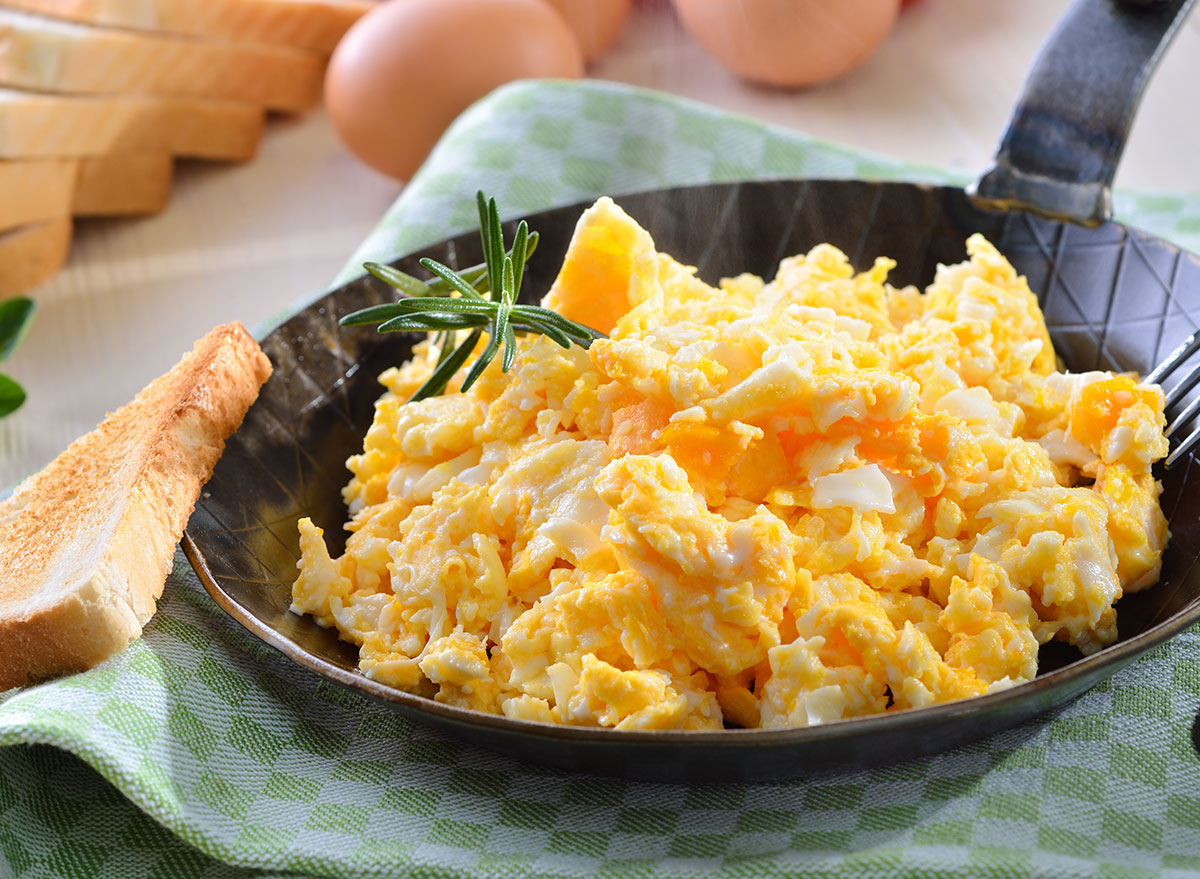
There's a reason you don't see a lot of bodybuilders in the over-50 category. Unfortunately, building and maintaining muscle mass doesn't get easier as we age. If you've passed your 50th birthday, you've likely noticed it takes significantly more effort to keep your biceps, pecs, quads, and other muscles rippling like a weightlifter's.
"Our muscles operate by the 'use it or lose it' law," says dietitian and personal trainer Anthony DiMarino, RD, CPT. "Muscles stay strong when they are used and fueled correctly. As we age, we challenge our muscles less and slow down. Our appetites also decrease, creating a challenge to eat enough protein to prevent losses."
The good news is, you're not powerless to combat this age-related loss of muscle (known as sarcopenia).
"The best way to build stronger muscles at any age, but especially after 50, is to combine a healthy diet with adequate protein and a well-rounded strength training routine," says Carissa Galloway, RDN, consultant for Premier Protein Nutrition. "While you cannot 'build' muscles with food alone, you also can't build muscles over the age of 50 without the adequate fuel."
And what is adequate fuel? Satiating, high-protein foods. We've rounded up a list of the top dietitian-approved, protein-rich choices to add to your diet for stronger muscles after 50. After, be sure to read up on our list of Healthy Foods You Should Be Eating Every Day.
Chicken or turkey breast
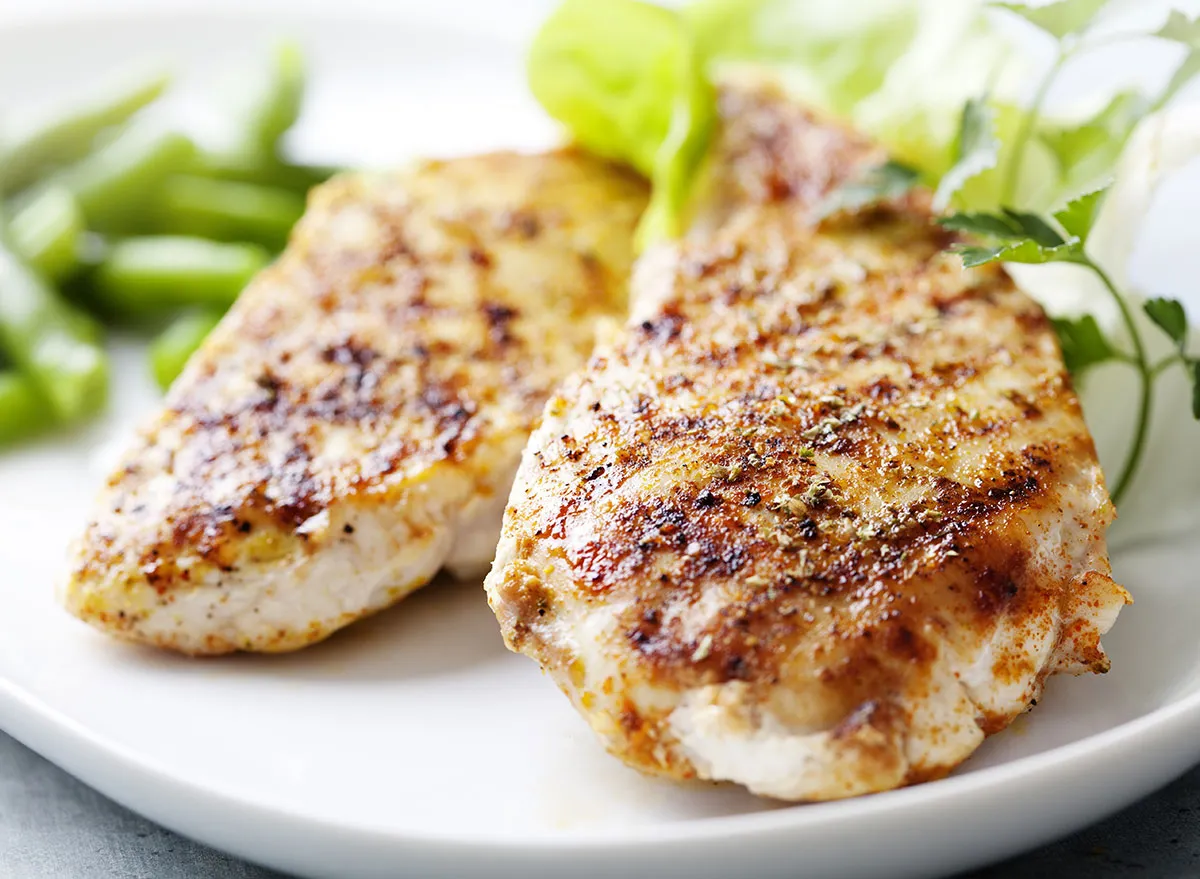
"The most protein-rich and accessible food would be chicken," says DiMarino. "Chicken breast is super lean and provides a whopping 21 grams of protein in a 3-ounce serving. It tends to be pretty affordable and can be cooked into an unlimited number of healthy dishes!"
As an animal product, chicken is also known as a complete protein, including a perfect ratio of the essential amino acids needed for muscle growth.
"Because of the biological processes that occur as we age, older adults require more protein to stimulate muscle mass than younger individuals," says Alyssa Pike, RD, Senior Manager of Nutrition Communications with the International Food Information Council. "Higher levels of dietary protein, especially protein that contains the essential amino acids, can help overcome this challenge."
Getting tired of chicken? Turkey breast is packed with even more protein. A 3-ounce serving comes with 26 grams. For an easy weekday turkey sandwich, try an all-natural product like Applegate Naturals oven-roasted turkey breast, which is 100% natural, free of artificial ingredients and preservatives, and has 11 grams of protein per two slices.
Dairy foods
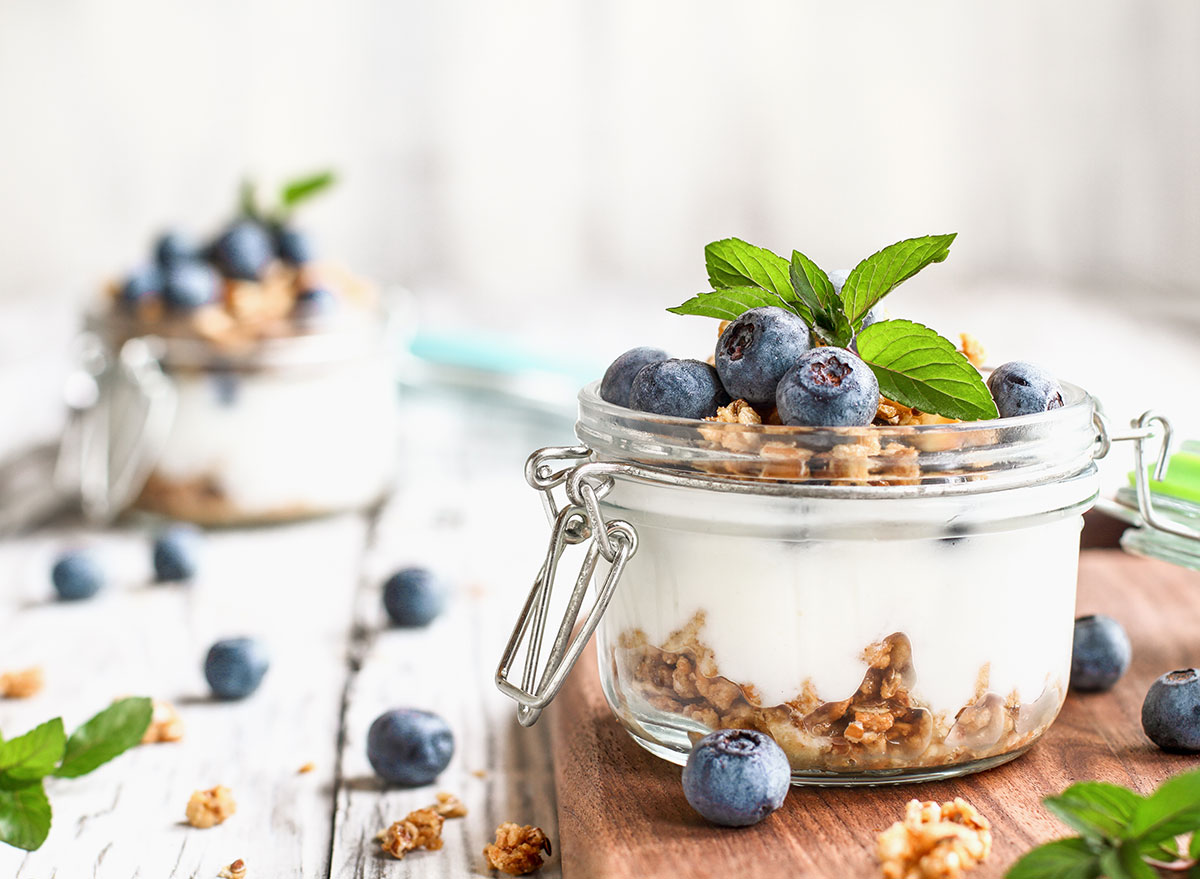
Want to bump up your strength? Don't overlook dairy! It's an unsung hero of muscle-building protein. Your morning bowl of cereal with milk or a mid-afternoon cup of yogurt contributes significantly to your daily total of this critical macronutrient.
With 24 grams per cup, Greek yogurt especially deserves its reputation as a protein power player, and its Icelandic cousin, skyr, is another high-protein, low-sugar choice.
Dairy also has a hidden benefit for people over 50 who struggle with poor dental health.
"Dairy is a versatile food group, containing many high-protein foods that are easy to chew and swallow, which is essential for many older adults," says Piket.
Meanwhile, dairy's high calcium level helps maintain healthy bones—another important goal for people in this age group.
Eggs
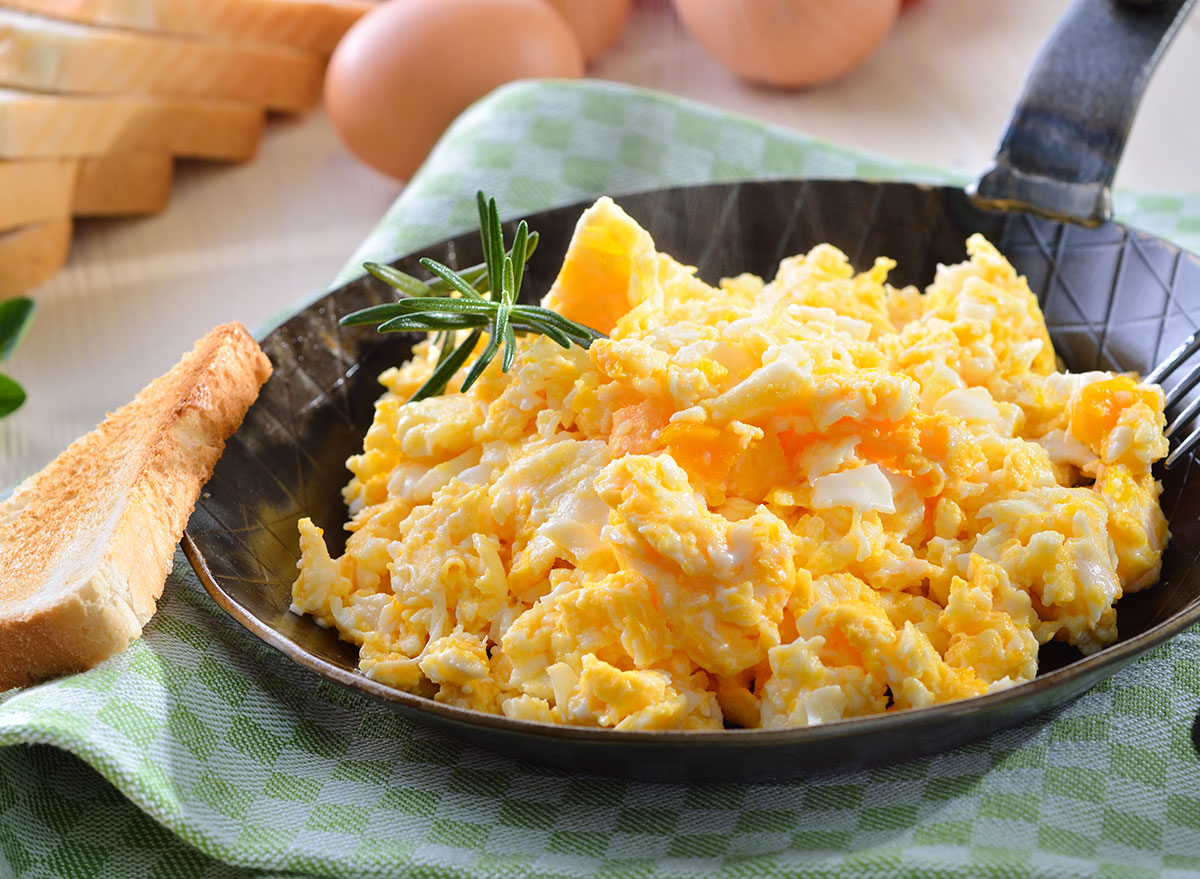
Hard-boiled, scrambled, or sunny-side-up, eggs are an easy protein addition any time of day.
"Eggs are one of my favorite proteins because they're easy to prepare and affordable, perfect for anyone on a fixed budget," says Galloway. "They are a compact source rich in nutrients, as one egg contains 7 grams of protein, along with vitamins, minerals, iron, carotenoids, and disease-fighting nutrients like lutein and zeaxanthin."
Can you ask for more in such a small package?
Protein shakes
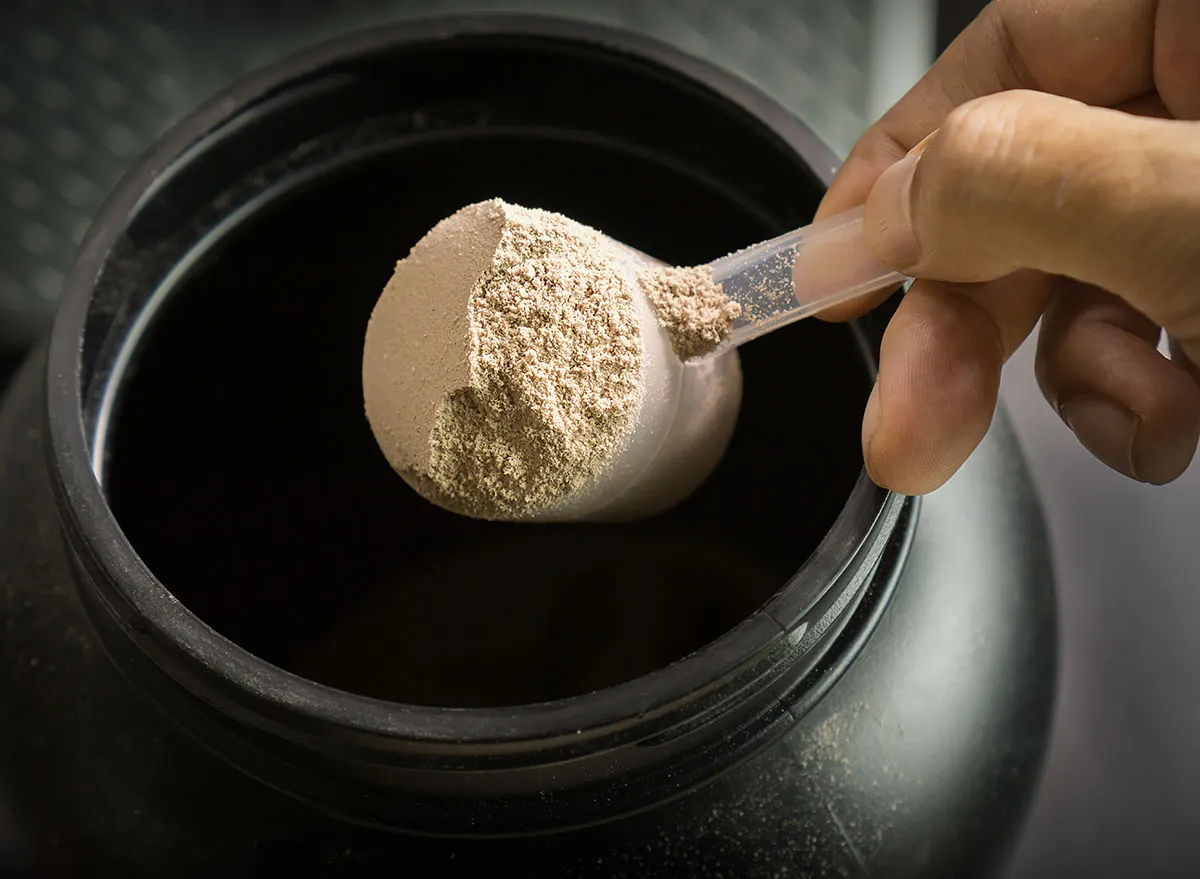
Life doesn't always slow down after 50. If you're frequently on the go, a protein shake can help fill in nutrition gaps you might be missing. A DIY shake with yogurt and a scoop of protein powder blends in just seconds—but for even more convenience, reach for a ready-made product.
"With no prep work or messy clean-up, ready-to-drink protein shakes are the perfect solution for a post-workout boost," says Galloway. "Immediately after a workout is the optimum timeframe to repair the muscles that were used and build new muscle. My go-to is Premier Protein High Protein Shakes. They're packed with 30 grams of protein, 160 calories, and 1 gram of sugar. Plus, they have a ton of flavor variety, so you'll never get bored!"
Legumes
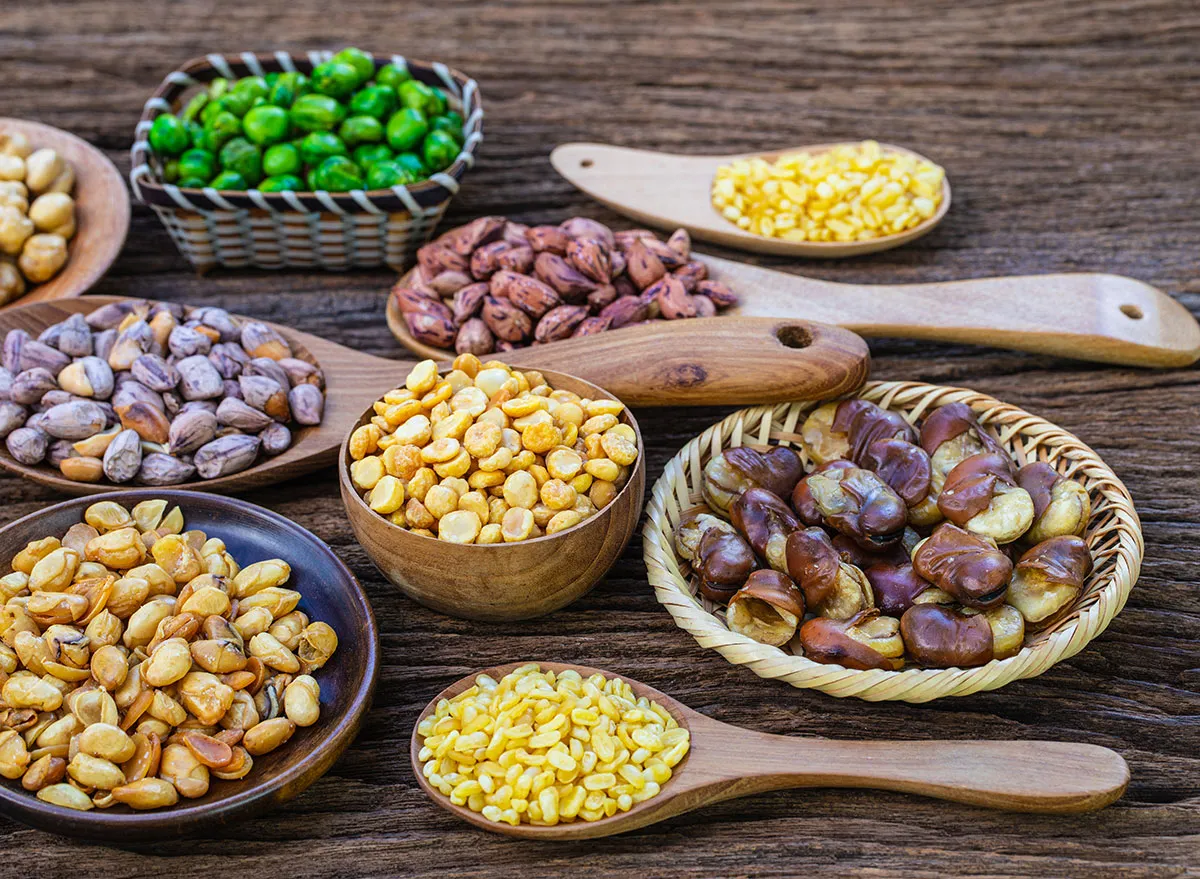
Not all protein-rich foods come from animals.
"Legumes, which include beans, peas, and lentils, offer a wide variety of nutrient-dense, plant-based protein options," says Pike.
Adding these high-fiber foods to your diet may also prevent constipation that's all too common in older adults. Galloway agrees—especially about lentils.
"Lentils are an incredible source of plant protein and help to provide a number of overall health benefits," says Galloway. "They are the third-highest protein by weight of any legume or nut, with 1/2 cup providing 9 grams of protein."
Besides their hefty protein count, the little legumes could also help reduce overall inflammation.
"Lentils also have a high content of phenols, which means they contain antioxidants that are anti-inflammatory and cardio-protective," says Galloway.









